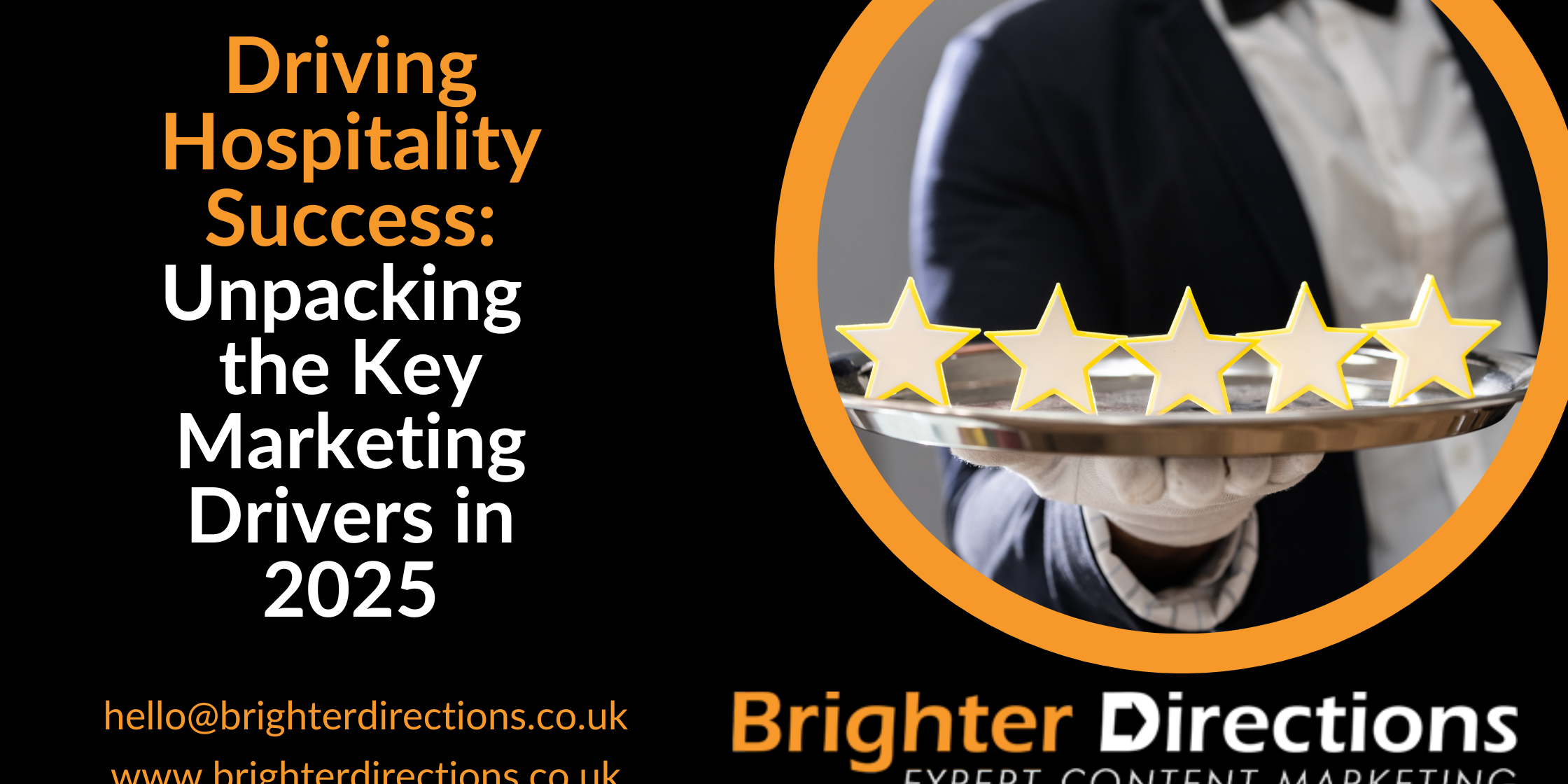The hospitality industry in 2025 is a dynamic and competitive arena. Standing out amidst a sea of options requires more than just comfortable beds or stunning views. True success hinges on a strategic and adaptable marketing approach that resonates with today’s discerning travellers and experience-seekers. This blog delves into the key marketing drivers that are shaping the future of hospitality, providing insights and actionable strategies to help your hotel, resort, attraction, or restaurant not just survive, but thrive in this evolving landscape. From leveraging cutting-edge technology to crafting authentic experiences, understanding these drivers is the first crucial step towards unlocking sustainable growth and achieving lasting success. Let’s explore the forces that are propelling hospitality businesses to new heights in 2025.
Here are 5 key marketing activities that hospitality and attraction businesses should be doing to promote their business in 2025:
1. Content Marketing with a Focus on Experiential Storytelling:
- Why: Today’s travellers are seeking experiences, not just transactions. High-quality content that showcases the unique aspects of your offering, tells compelling stories of past guests, and provides valuable information about the destination builds desire and trust.
- Examples:
- Blog posts: “A Weekend of Adventure in the [Local Area],” “Behind the Scenes at Our [Attraction],” “Top 5 Hidden Gems Near [Your Hotel].”
- High-quality photography and videography: Showcasing the ambiance, amenities, and experiences offered. Think cinematic videos of guests enjoying themselves, drone footage of stunning locations, and mouth-watering food photography.
- Guest testimonials and stories: Feature real guest experiences through blog posts, social media takeovers, or short video interviews.
- Virtual tours: Allow potential guests to explore your property or attraction remotely.
- Interactive content: Quizzes like “What’s Your Perfect Getaway Style?” or downloadable local guides.
2. Hyper-Personalised Digital Marketing:
- Why: Generic marketing is easily ignored. Leveraging data to deliver personalised messages and offers based on past behaviour, preferences, and demographics significantly increases engagement and conversion rates.
- Examples:
- Email marketing segmentation: Tailoring emails based on booking history, interests (e.g., spa lovers, adventure seekers), or loyalty programme status.
- Dynamic website content: Displaying relevant offers or information based on a visitor’s browsing history or location.
- Personalised social media advertising: Targeting specific demographics and interests with tailored ad creatives.
- Loyalty programmes with personalised rewards: Offering perks and discounts based on individual guest preferences and spending habits.
- Using CRM data to personalise on-property experiences: Staff being aware of guest preferences upon arrival.
3. Active and Authentic Social Media Engagement:
- Why: Social media is where many potential guests discover and research travel options. Active and authentic engagement builds community, fosters trust, and encourages user-generated content (UGC).
- Examples:
- Consistent posting of visually appealing content: High-quality photos and videos showcasing your property or attraction and the surrounding area.
- Responding promptly and thoughtfully to comments and messages: Showing that you value your audience’s feedback.
- Running engaging contests and giveaways: Encouraging interaction and brand awareness.
- Partnering with relevant influencers: Collaborating with travel bloggers, photographers, or local personalities to reach a wider audience.
- Encouraging and sharing user-generated content: Reposting guest photos and videos to showcase authentic experiences.
4. Optimised Local SEO and Online Reputation Management:
- Why: For many travellers, their search for accommodation or attractions starts locally. A strong local SEO presence ensures you’re visible when they’re actively looking, and a positive online reputation builds trust and encourages bookings.
- Examples:
- Optimising your Google My Business (now Google Business Profile) listing: Ensuring all information is accurate and up-to-date, including photos, hours, and contact details.
- Encouraging and actively managing online reviews on platforms like Google, TripAdvisor, and Booking.com: Responding to reviews (both positive and negative) professionally.
- Building local citations: Ensuring your business name, address, and phone number are consistently listed across relevant online directories.
- Targeting local keywords in your website content and SEO efforts.
- Engaging with local community events and organisations online.
5. Seamless and Mobile-First Digital Experience:
- Why: Travellers are increasingly using their mobile devices to research, book, and manage their trips. A clunky or non-responsive website and booking process will lead to lost business.
- Examples:
- A fully responsive and mobile-friendly website: Ensuring easy navigation and viewing on all devices.
- A streamlined and intuitive online booking engine: Making the reservation process quick and easy on mobile.
- Mobile apps (if applicable): Offering added convenience for loyal guests (e.g., mobile check-in/out, digital keys, personalised offers).
- Fast loading times: Optimising your website and digital assets for quick loading on mobile networks.
- Easy access to essential information: Clearly displaying contact details, directions, and FAQs on mobile.
By focusing on these five key marketing activities, hospitality and attraction businesses can effectively promote their offerings, reach their target audience, build strong brand loyalty, and ultimately drive bookings and revenue in 2025.
To discuss your marketing, PR or social media requirements, book a free discovery call today: https://calendly.com/brighterdirections


